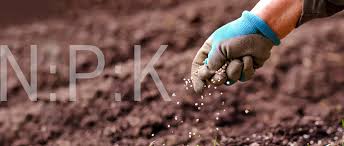
12월 . 24, 2024 06:27 Back to list
potash types
Understanding Potash Types A Comprehensive Overview
Potash, a term that refers to various mined and manufactured salts containing potassium, plays a crucial role in agriculture and various industrial applications. With its primary use as a potassium fertilizer, potash is essential for plant growth, affecting yield, size, and quality of crops. In this article, we will delve into the various types of potash, their sources, and their unique applications.
What is Potash?
Potash typically refers to potassium carbonate and its derivatives. It is vital for plant health, aiding in physiological functions, enzyme activation, and the transportation of nutrients and water. The term potash itself is derived from the traditional method of producing potassium carbonate by leaching wood ashes and evaporating the resulting solution in large iron pots.
Types of Potash
The various types of potash can be categorized based on their chemical composition and source. Here are the most common types
1. Muriate of Potash (MOP) Muriate of Potash, or potassium chloride (KCl), is the most commonly used potash fertilizer. It contains about 60-62% potassium oxide (K2O) and is favored for its high potassium content. MOP is soluble in water, making it readily available to plants. Its primary applications are in the production of grains, corn, and soybeans, where potassium is critical for crop development.
2. Sulfate of Potash (SOP) Sulfate of Potash, or potassium sulfate (K2SO4), is another significant form of potash. It contains approximately 50-52% potassium oxide and also includes sulfur, which is beneficial for certain crops, especially those sensitive to chlorine, such as fruits and vegetables. SOP is often used in organic farming and in areas where soil conditions require a low-chloride fertilizer.
potash types

3. Potassium Nitrate Potassium nitrate (KNO3) is a dual-purpose fertilizer that provides both potassium and nitrogen—two essential nutrients for plant growth. This type of potash is particularly beneficial for crops that require high nitrate levels, such as root vegetables and leafy greens. Its quick-release form ensures rapid nutrient availability, making it effective for use in controlled environments like greenhouses.
4. Langbeinite (K2Mg2(SO4)3) Langbeinite is a less common form of potash that contains potassium, magnesium, and sulfate. It is a natural mineral and is often used as a fertilizer for soils that are low in magnesium. Langbeinite provides a balanced nutrient package, essential for crops that benefit from both potassium and magnesium, such as certain fruits and nuts.
5. Kainite Kainite is a naturally occurring mineral that consists of hydrated potassium magnesium sulfate (K2SO4·MgSO4·H2O). It is primarily used for its potash content but also supplies magnesium and sulfur, making it suitable for a wider range of agricultural applications. Kainite is often utilized in areas where soil magnesium levels are insufficient.
Sources of Potash
Potash is obtained from two main sources mineral deposits and brine solutions. Most of the world’s potash supply comes from large mineral deposits found in sedimentary rock formations created from the evaporation of ancient seas. Countries like Canada, Russia, and Belarus are among the largest producers of potash. In addition to mining, potash can also be extracted from brine solutions, typically found in salt lakes and underground reservoirs.
Conclusion
Understanding the types of potash is essential for farmers and agricultural professionals aiming to optimize crop yields and maintain soil health. Each type of potash has unique properties and applications, making it critical for farmers to select the appropriate type based on their specific crop requirements and soil conditions. As the demand for food increases, the role of potash in sustainable agriculture will continue to grow, reinforcing its significance in the global agricultural landscape. Understanding these types ensures that farmers can make informed decisions, ultimately leading to more productive and sustainable farming practices.
-
Premium 15-30-15 Granular Fertilizer for Vigorous Growth
NewsAug.24,2025
-
Organic Amino Acid Fertilizer for Plants | Boost Growth & Yield
NewsAug.23,2025
-
Calcium Ammonium Nitrate (CAN) White Granular Agriculture Fertilizer
NewsAug.22,2025
-
Organic 10-10-10 Fertilizer: Balanced NPK for Healthy Plants
NewsAug.21,2025
-
10 10 10 Organic Fertilizer: Balanced NPK for Healthy Gardens
NewsAug.19,2025
-
Advansix Sulf-N Ammonium Sulfate 21-0-0 Fertilizer
NewsAug.18,2025
